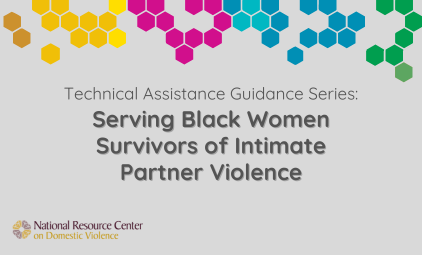Colleges and universities have been a key venue for the development and evaluation of sexual violence prevention programming. However, there are no studies demonstrating a link between campus-based sexual assault prevention programs and a subsequent campus-wide reduction in the incidence of sexual violence (Coker, Cook-Craig, Williams, Fisher, Clear, Garcia, & Hegge, 2011; Teten Tharp, DeGue, Lang, Valle, Massetti, Holt, & Matjasko, 2011).
Nevertheless, there remain important reasons to pursue campus-based gender violence prevention programming:
- Prevention programming can create a safer climate where victims feel more comfortable reporting, actually raising the number of recorded incidences of assault.
- Using a decrease in the incidence of sexual assault as the only measure of success for prevention programs ignores many other short- and intermediate-term goals that are conceptually linked to a reduction in sexual assault, such as increasing students knowledge about rape and changing attitudes related to rape so that students are less likely to blame victims (Anderson & Whiston, 2005; Lonsway, Banyard, Berkowitz, Gidycz, Katz, Koss, Schewe, & Ullman, 2009).
- Research shows that a significant number of woman experience sexual violence while in college (Fisher, Cullen, & Turner, 2000; Koss, Gidycz, & Wisniewski, 1987; Krebs, Lindquist, Warner, Fisher, & Martin, 2007; Black et. al., 2011).
Gender Violence Prevention Programs: An Overview
- Campus programming has many variations, but generally offers a structured educational experience for students in the form of a lecture, theatre presentation, film and discussion, or skill building workshop.
- Programming based on the argument that sexual assault is culturally constructed and supported (Berkowitz, 2000; Brownmiller, 1975; Schwartz & DeKeseredy, 1997; Katz, 2006).
- Objectives include reducing attitudes that support rape, increasing knowledge about sexual violence, building empathy for survivors of sexual assault (Anderson, 2005; Foubert, 2000, 2007; Heppner, Humphrey, Hillenbrand-Gunn, & DeBord, 1995; Lonsway, 1996), increasing resistance strategies and skills (Gidycz, Lynn, Rich, Marioni, Loh,& Blackwell, 2001; Gidycz & Laymen et al., 2001; Gidycz, Rich, Orchowski, King, Miller, 2006; Hanson & Gidycz, 1993) and, increasing the likelihood that participants will intervene in potentially abusive or violent situations (Coker et al., 2011; Banyard, Moynihan, & Plante, 2007; Banyard, Plante, Cohn, Moorhead, Ward, & Walsh, 2005; Banyard, Plante, & Moynihan, 2004).
How Effectiveness Is Measured
- Researchers use evaluation measures and statistical analysis techniques to gauge the change in participants knowledge, attitudes, and expected future behavior.
- More recent research investigates change in the level of confidence in one's ability to intervene in potentially dangerous or harmful situations, as well as one's expected or actual behavior in potentially dangerous situations.
- Most research findings are based on studies that collected one pre-test and one post-test on subjects; there are a few longitudinal studies that take post-tests 3 or 6 months following intervention.
- The most widely used scales for attitude change are the Rape Myth Acceptance Scale or RMAS (Burt, 1980) and its revised version, the Illinois Rape Myth Acceptance Scale or IRMAS (Payne, Lonsway, & Fitzgerald, 1999).
Are Campus-based Programs Successful?
The following themes emerged when looking at the existing literature related to the evaluation of campus-based anti-gender violence programming:
- Programs have been effective at increasing knowledge and decreasing rape supportive attitudes, especially in the short term.
- Although mixed-gender audiences have shown improvements in desired outcomes, the effect of interventions is greater with single-gender audiences (with the exception of bystander programs where effectiveness seems unrelated to the gender composition of participants).
- The effectiveness of anti-violence programming is greatly reduced over time, but booster sessions can help to maintain positive changes.
- Dosage matters. Longer and more frequent exposures to interventions result in greater outcomes.
- Complex discussions of gender roles and myths that support a climate of silence and shame around sexual assault are important elements of programs that seek to change attitudes about rape.
- Effective programs require well-trained prevention practitioners.
- Risk reduction/resistance strategy models for women and empathy-based programs for men show promise, but more evaluation is necessary.
- Bystander models show clear promise as effective violence prevention programs (in both single and mixed-gender groups), but more evaluation is necessary.
- Bystander programs have demonstrated a link between change in attitudes and change in behavior.
Implications for the development and implementation of campus-based gender-violence prevention programming
Specific opportunities for colleges and universities to engage in evidence-based gender violence prevention are described below:
- Many approaches to sexual violence prevention show promise and universities should chose programs based on their ability to target audiences based on gender. Current research indicates that the bystander model shows significant promise for a single presentation to mixed gender groups. A university's overall strategy should include not only prevention programming but initiatives across the university and at various levels of prevention including policy and organizational practices.
- Reducing sexual violence on campus will require of program implementation and the investment of the whole campus in violence prevention.
- Sexual violence prevention programming should follow the ecological model, with prevention education is one component of a package of efforts to reduce sexual violence on the college campus.
- Colleges and universities should be prepared for reports of sexual violence to increase on their campuses as they commit to sexual violence prevention.












